#Spheniscidae
Text
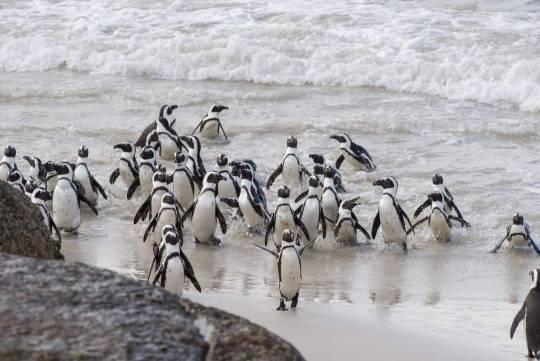
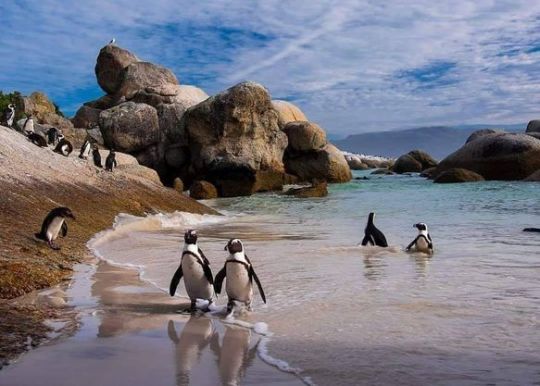

African Penguins (Spheniscus demersus), family Spheniscidae, order Sphenisciformes, Boulders Penguin Colony, Table Mountain National Park, South Africa
ENDANGERED.
photographs via: SANParks - Table Mountain National Park
411 notes
·
View notes
Text
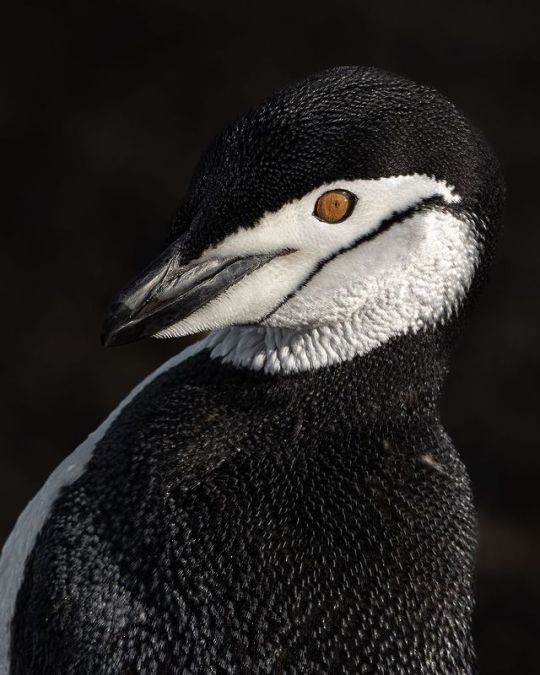
Chinstrap Penguin
200 notes
·
View notes
Text

AFRICAN PENGUINS IDENTIFY PATNERS BY THEIR CHEST DOTS
Birds are known to be highly social and visual animals, and penguins are not the exception, as they live in dense colonies. Yet no specific visual feature has been identified to be responsible for individual recognition in birds. Now, researchers demonstrate that african penguins (Spheniscus demersus) can recognize their each others using their ventral dot patterns.
Researchers placed a experiment at the Zoomarine Marine Park, in Rome, Italy, to test how penguins will react to a model with plain with no dot penguin, and to penguins with dots, to find out penguins actually could visually recognize the dots of their lovers and friends in the zoo.
Penguins rely strongly on their ventral dot patterns for individual recognition, and may have holistic representations of other penguins in the colony. In this video below, an african penguin named Gerry appears to recognize his mate, Fiorella (left), in an individual recognition experiment.
These findings suggest that african penguins may rely on a more holistic visual representation of their partner, which includes both the ventral dot patterns and their partner's facial features. Notably, these abilities are not dependent on the ability of a pair to produce offspring together. Nemo and Chicco, male partners, showed the same preference for each other as other penguin partner pairs, suggesting that the ability to distinguish the partner from others is driven simply by the special bond developed between nesting partners.
Photo: Few members of the Zoomarine Italia penguin colony. Unique ventral dot patterns are visible on each penguin's chest. Photo: Cristina Pilenga.
Baciadonna et al., 2024. African penguins utilize their ventral dot patterns for individual recognition. Animal Behaviour.
#Spheniscus demersus#Spheniscus#spheniscidae#african penguin#penguins#science#marine science#ethology#biology#marine biology#bioblr#sciblr#scienceblr#sciencie#science side of tumblr
193 notes
·
View notes
Text
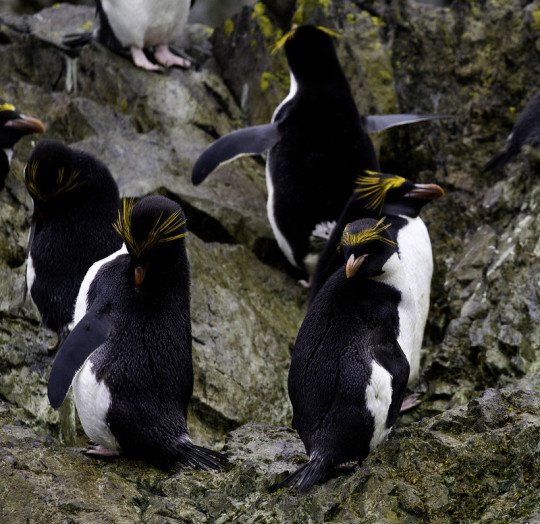
A group of macaroni penguins (Eudyptes chrysolophus) on South Georgia Island, Antarctica
by PSeubert
#macaroni penguin#penguins#birds#eudyptes chrysolophus#eudyptes#Spheniscidae#sphenisciformes#aves#chordata#wildlife: south geogia#wildlife: antarctica
101 notes
·
View notes
Text

[2377/11080] Chinstrap penguin - Pygoscelis antarcticus
Order: Sphenisciformes (penguins)
Family: Spheniscidae
Genus: Pygoscelis (brush-tailed penguins)
Photo credit: David Howe & Rosanne Dawson via Macaulay Library
92 notes
·
View notes
Photo

Emperor Penguin (Aptenodytes forsteri)
© Richard McManus
752 notes
·
View notes
Photo

King Penguin (Aptenodytes patagonicus)
© Celtic Paddles
769 notes
·
View notes
Photo

Gentoo Penguin (Pygoscelis papua)
© Mariann Cyr
219 notes
·
View notes
Photo




Crowning the King Penguin
The second largest species of penguin in the world, the king penguin (Aptenodytes patagonicus) is found along the southern coasts of South America and Australia, as well as islands surrounding Antarctica. They thrive mainly along sparsely vegetated coasts and on the wide ice sheets that surround the Antarctic continent in the winter. They can endure temperatures of up to -10°C and swim in temperatures frequently below freezing.
The king penguin is among the largest penguins, about a meter at its tallest and weighing up to 18kg; generally females are slightly smaller than males. They look very similar to their larger relative the emperor penguin (Aptenodytes forsteri): both sport a dark grey or black head with yellow patches on the sides and throat, a dark back, and a white belly. However, the king penguin is more brightly coloured than the emporer penguin, and has a longer bill. Young penguins have an entirely brown coat, and only grow their adult feathers after several molts.
The primary food source for A. patagonicus are cephalopods and small fish, supplemented by krill and other marine invertebrates. Although they usually hunt in the upper water column for such prey, they regularly dive down to depths of over 200m. To find hunting grounds, king penguins can travel up to 500km from their colony. Year-round predators include fur seals, leopard seals and killer whales, and in the summer birds can snatch eggs and hatchlings.
Though king penguins have no formal social structure, they are highly social creatures. Groups of anywhere from a dozen to a hundred individuals travel together between seasons, hunt together, and frequently call to each other. Colonies themselves can easily number in the tens of thousands. King penguins also serially monogamous; they stay with one mate throughout a breeding season, and the next season both mates choose whether to return to their nest or search for a better mate. More often than not, pairs will stay together throughout multiple seasons, though king penguins do have lower rates of monogamy than other penguin species. King penguins also regularly exhibit homosexuality in the wild, with one study finding over a quarter of pairs in a colony were between same-sex individuals.
King penguins are one of only two species of penguin that do not build nests. At the beginning of the mating season, in spring, single males perform loud displays, throwing their head and wings back and puffing out their chests. The female chooses a mate, and the two perform a short dance, after which they molt together for a month. Shortly after, the female lays one egg. This eggs incubates for about 54 days, cared for and carried in a special pouch by both parents. and the ensuing chick is looked after and fed for another 14 to 16 months. During that time, parents take turns hunting for food at sea, and groups of chicks can form a crèche which is looked after by another, unrelated adult. At almost two years old, chicks become fully independent, though they do not mature sexually until 3-5 years of age. King penguins can live up to 25 years in the wild.
Conservation status: The IUCN has rated the king penguin as Least Concern. However, shrinking ice sheets have reduced feeding grounds and breeding colonies, and large reductions in the population are expected in the future.
Photos
Kimberly Kliska
Kerry Steinberner
Carl Henry
Tom Brakefield
#king penguin#Sphenisciformes#Spheniscidae#great penguins#penguins#birds#marine fauna#marine birds#islands#island birds#coasts#coastal birds#open ocean#open ocean birds#pelagic fauna#pelagic birds#antarctica#south america#southern south america#oceania#southern oceania#antarctic ocean#queer fauna#animal facts#biology#zoology
404 notes
·
View notes
Text
Round 2, Poll 3
White-throated Magpie-Jay vs African Penguin
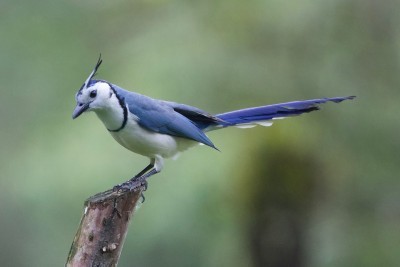

sources under cut
White-throated Magpie-Jay
While most cooperative breeders have young males stay behind to raise chicks, this species has the female offspring hang back in their home territory to help with future brrods, while the males disperse. Floating males are allowed to join in on groups while foraging, however, outside of breeding season.
Because of their social pattern, and the fact that resource guarding is not done by the males, the best way they seem to have to show off is during a predator encounter. The males will often fly directly at a low-threat predator (or even a dove) and begin making some of their many (60+) vocalizations as a way to show off, as this is the time when they're being paid attention to.
African Penguin
"They’re my favorite penguin and people forget about the warm weather species. These guys are such funny bastards. They’re like horny toddlers. They loaf. They crave violence. They can swim faster than Michael Phelps."
The nickname "Jackass Penguin" comes from their loud, braying calls- though several species of South African penguin make these same noises. Other names include: Cape penguin, South African penguin, and black-footed penguin.
African Penguin are listed as Endangered by IUCN, with the most likely cause in decline being the fishing industry. Their prey includes multiple species of schooling fish, such as anchovy, pilchard, and herring, which are also often targeted by fisherman. Human disturbance of nesting colonies also plays into this, with tourists accidentally collapsing nest-burrows, and guano or egg collection leading younger birds to abandon breeding sites.
Birds of the World: Both species
Images: Magpie-Jay (Cory Gregory); Penguin (Kalin Ocaña)
#hipster bird main bracket#polls#white throated magpie jay#african penguin#corvidae#spheniscidae#round 2#bracket: fave a
12 notes
·
View notes
Photo

Emperor Penguin (Aptenodytes forsteri)
© Richard McManus
120 notes
·
View notes
Text
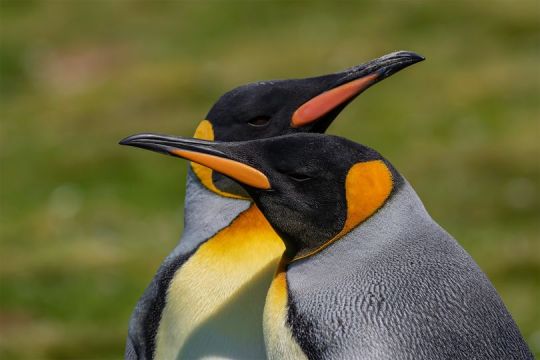
King Penguins (Aptenodytes patagonicus), family Spheniscidae, order Sphenisciformes, South Georgia Island
photograph by Thomas Kallmeyer
223 notes
·
View notes
Text
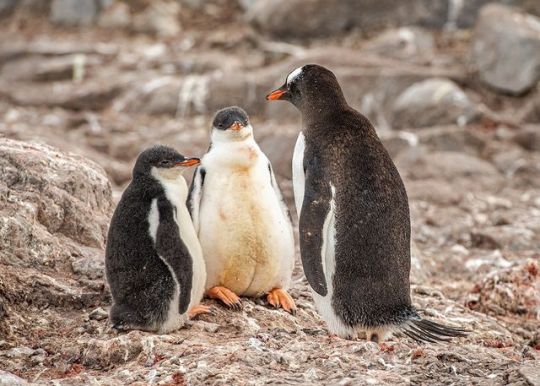
Gentoo Penguin
299 notes
·
View notes
Text
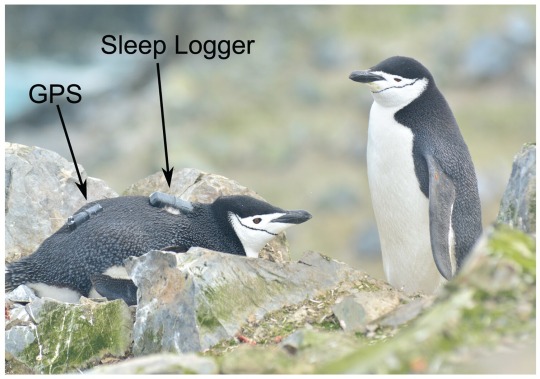
ANTARTIC PENGUINS CHAMPIONS OF POWER NAPS
Microsleep in humans are dangerous when driving, but just now, researchers found out penguins dominated microsleep, using these short sleep periods as strategy to balance sleep and vigilance requirements. An international team of researchers at the King George Island were looking at breeding chinstrap penguins (Pygoscelis antarcticus) using remote electroencephalogram monitoring, to they found out penguins nodded off more than 10,000 times a day, for only around 4 seconds at a time, but penguins still managed to accumulate close to 11 hours of sleep.
The brown skua (Stercorarius antarcticus), are very smart birds, and one of the main predators in nesting colonies. During incubation, skuas are known to prey on penguin eggs mainly on the border of the colony. As one penguin parent must therefore guard the eggs or small chicks continuously while its partner is away on foraging trips lasting several days, they face the challenge of needing to sleep while protecting their offspring In addition, they also have to effectively defend their nest site from intruding penguins, they need to stay alert.

-Recordings showing typical microsleep episodes in chinstrap penguins.
The investment in microsleeps by successfully breeding penguins suggests that the benefits of sleep can accrue incrementally.
Reference (Open Access): Libourel et al. 2023. Nesting chinstrap penguins accrue large quantities of sleep through seconds-long microsleeps. Science
#chinstrap penguin#Pygoscelis antarcticus#spheniscidae#science#biology#antarctica#marine science#ethology#bioblr#sciblr#Stercorarius antarcticus#skua#brown skua
125 notes
·
View notes
Text

A male gentoo penguin (Pygoscelis papua) gathers marsh grass in South Georgia, Antarctica
by Laurence Green
#gentoo penguin#penguins#seabirds#birds#pygoscelis papua#pygoscelis#spheniscidae#sphenisciformes#aves#chordata#wildlife: south georgia#wildlife: antarctica
314 notes
·
View notes
Photo

[32/10,976] Adélie Penguin - Pygoscelis adeliae
Order: Sphenisciformes (penguins)
Family: Spheniscidae
Genus: Pygoscelis (brush-tailed penguins)
Photo credit: Noah Stryker via Macaulay Library
183 notes
·
View notes